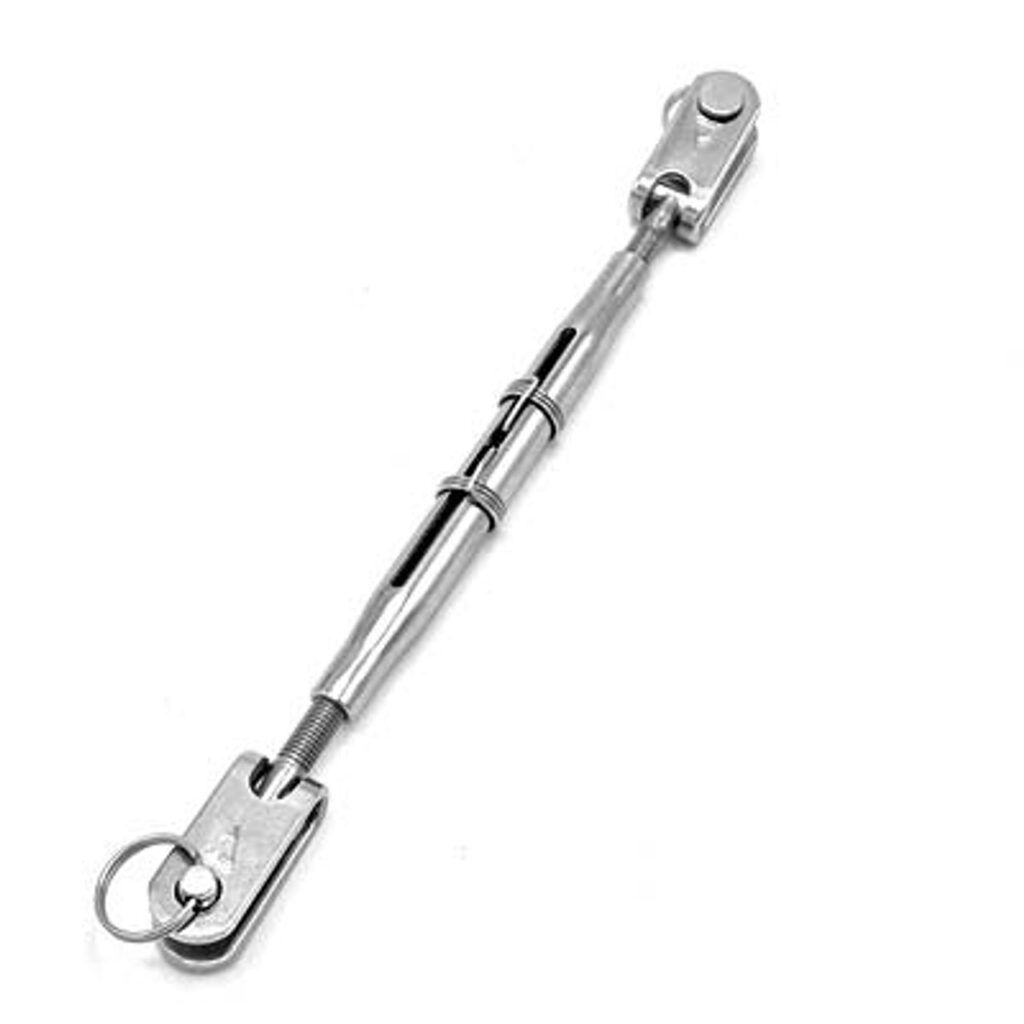Turnbuckles are a versatile and adjustable component used to tension and adjust cables and wire ropes in a variety of applications, including trellis systems, rigging, and suspension systems. Turnbuckles consist of two threaded rods connected by a center body, which can be turned to adjust the tension of the cable or wire rope.
In this guide, we will explore how a turnbuckle adjusts the tension in a cable or wire rope, including the components and mechanics involved.
Components
The turnbuckle is composed of three main components: two threaded rods, and a center body. The threaded rods are connected to each end of the center body, which is typically a cylindrical or tubular shape. The rods are threaded in opposite directions, which allows them to be turned in opposite directions to adjust the length of the turnbuckle.
The threaded rods have a right-hand thread on one end and a left-hand thread on the other end. This allows the rods to be screwed into the center body in opposite directions, creating a mechanism that can be turned to adjust the tension in a cable or wire rope.

Mechanics
To adjust the tension in a cable or wire rope using a turnbuckle, the turnbuckle is installed between two anchor points, such as eye bolts or other fittings. The cable or wire rope is threaded through the turnbuckle’s center body, and the threaded rods are screwed into the anchor points.
To adjust the tension, the center body of the turnbuckle is turned, which causes the threaded rods to move in opposite directions. This increases or decreases the distance between the anchor points, which adjusts the tension in the cable or wire rope.
As the center body of the turnbuckle is turned, the threaded rods move closer or further apart, depending on the direction of the turn. This creates an increase or decrease in the length of the turnbuckle, which adjusts the tension in the cable or wire rope.
Types of Turnbuckles
There are several types of turnbuckles used to adjust the tension in cables and wire ropes. The most common types are hook and eye, jaw and eye, and jaw and jaw turnbuckles.
Hook and eye turnbuckles have a hook on one end and an eye on the other end. The hook is attached to one anchor point, while the eye is attached to the other anchor point. The cable or wire rope is threaded through the center body and adjusted by turning the center body of the turnbuckle.
Jaw and eye turnbuckles have a jaw on one end and an eye on the other end. The jaw is attached to one anchor point, while the eye is attached to the other anchor point. The cable or wire rope is threaded through the center body and adjusted by turning the center body of the turnbuckle.
Jaw and jaw turnbuckles have a jaw on each end, which allows them to be used to connect two cables or wire ropes. The jaws are attached to the cables or wire ropes, and the turnbuckle is adjusted by turning the center body.
Limitations
While turnbuckles are a versatile and effective means of adjusting the tension in cables and wire ropes, they do have some limitations. They are not suitable for use in applications where the load is dynamic, as the constant movement can cause the turnbuckle to loosen or slip.
Additionally, turnbuckles are not suitable for use in applications where the load is too heavy or where the cable or wire rope is too thick. In these cases, other tensioning systems, such as hydraulic tensioners or cable clamps, may be more suitable.
In conclusion, turnbuckles are a simple and effective means of adjusting the tension in cables and wire ropes. They consist of two threaded rods connected by a center body, which can be turned to increase or decrease the distance between two anchor points, which adjusts the tension in the cable or wire rope. While turnbuckles have some limitations, they are a versatile and cost-effective option for a variety of applications.